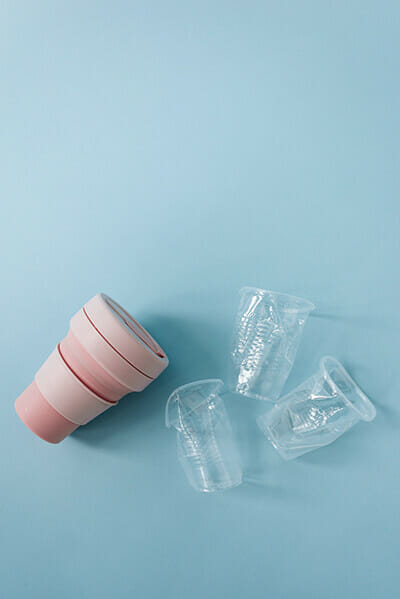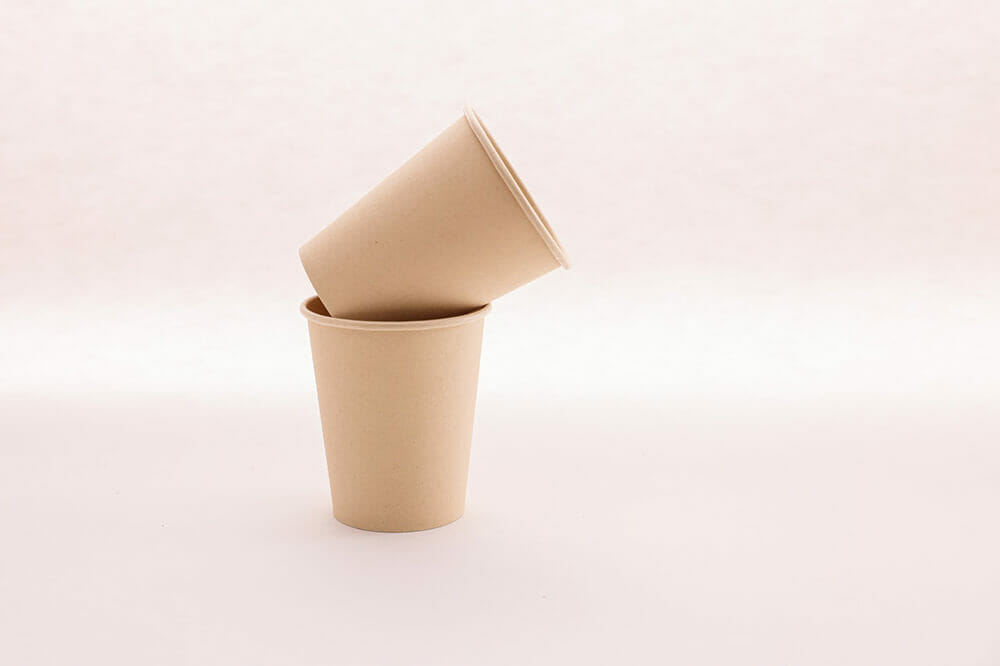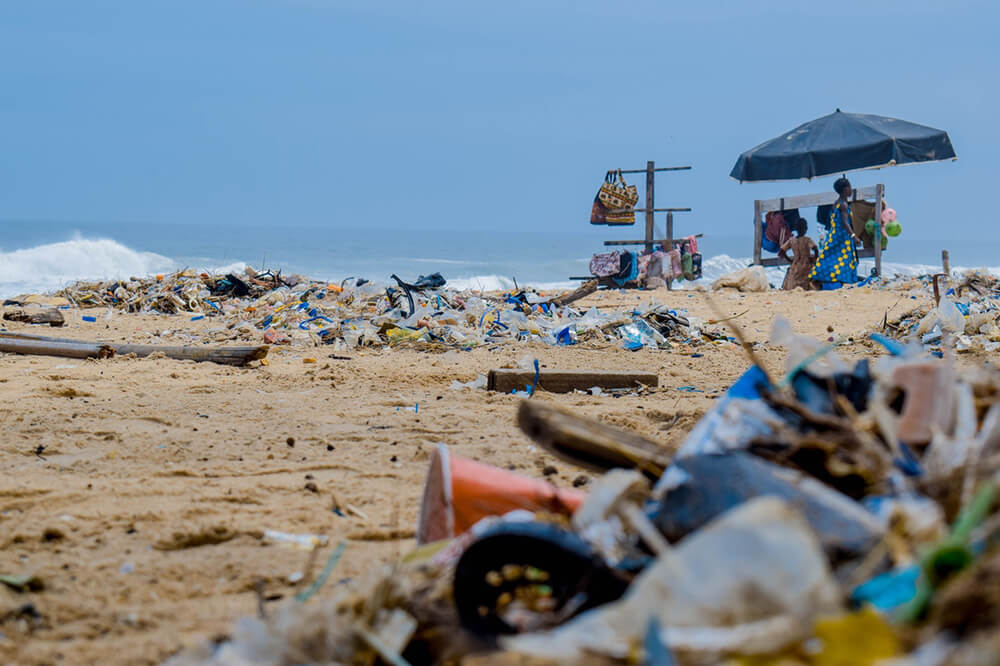Plastic Cups
Paper Cups vs. Plastic Cups: Which one to choose?
Since their introduction in the early 20th century, disposable cups have become ubiquitous, and their design has come a long way. Paper and plastic are the two primary materials used for disposable cups, and they’re quite useful when you need to drink on the move.
However, because both paper and plastic cups have their own advantages and disadvantages, it’s difficult to say which is better for the environment. Though both save water by eliminating the need to wash reusable cups, several other aspects of their manufacture can have an environmental impact.
In this article, we’ll discuss the benefits and downsides of paper vs. plastic cups so that you can make an informed decision the next time you need to choose between these options.
About Disposable Cups
Drinking from shared glasses at public water sources, such as public faucets or the water barrels that were maintained in trains, was a pretty widespread practice at the turn of the twentieth century. As one might assume, this cup sharing lead to some public health problems.
The emergence of paper and polystyrene cups improved public health by limiting the spread of germs in these public spaces. Both types are now widely used around the world. However, it is debatable which one is preferable from an environmental standpoint. Although the research on the subject can be perplexing, we’ll try to comb through it all today to determine whether paper or plastic cups are better for the environment.
Benefits Of Using Disposable Cups
Disposable utensils and dishes are commonly used at all kinds of parties, small gatherings, and celebrations. Disposable cups, which come in a variety of shapes and sizes, are the most prevalent, as almost any event will have something to drink, and disposables save a lot of money and hassle for cleanup.
We pick them up from the store with hardly a second thought, but there’s a lot more to them than we often realize. So, in this post, we’ll tell you everything you need to know about these commonplace items.
Convenience
As humans, we’ve put our intellect and creativity to work designing tools that make everyday life easier. Convenience is an important factor in the choices we make. Cups themselves have been around for nearly as long as humanity itself, though their design and manufacturing has changed significantly as technologies have progressed. Cups are tools that must be maintained, cleaned, and stored appropriately.
However, this degree of maintenance can be troublesome, especially in our fast-paced lives when we’re hosting and attending large events such as celebrations and conferences. Cleaning all of the dishes and utensils, including the cups, takes time that we’d often rather spend elsewhere. It’s also crucial to note that dishwashing uses a lot of water.
Practicality

Aside from being convenient, disposable cups are also very practical. As previously stated, the modern world is a fast-paced one. To be able to bring a hot beverage anywhere and everywhere may sound like a luxury, but we’ve made this possible with a variety of options like plastic cups, reusable containers such as metal thermoses, tumblers, and even silicone cups. Still, these options are expensive, easily breakable, and can easily be misplaced. On the other hand, disposable cups are inexpensive and readily replaceable. In today’s fast-paced environment, this is the ideal drinking tool for many occasions.
It’s also important to keep in mind that disposable cups are often safer to use than reusable cups. Reusable cups all need to be cleaned thoroughly before they can be used again, but there’s a chance that the cleaning process won’t be perfect, leaving germs that can make the user sick. It’s also worth remembering that reusable cups are often constructed materials that can break or tear, and, if consumed, might result in injury or other health issues.
Variety
Disposable cups are available in a variety of styles. These days they can be made of materials that are sustainable and easy to recycle, which is vital for making the world a greener environment while also bringing convenience and flexibility to everyone.
Cost-Effectiveness
When it comes to cost, weight is a significant aspect. A heavier item typically costs more because of several factors. Shipping heavy objects consumes more fuel and necessitates other precautionary measures to ensure they don’t break during transit. This is one of the main reasons coffee shops choose to serve disposable cups rather than reusable cups to their clients. It’s also the more cost-effective alternative for people on a tight budget.
It may seem like the recurring expense of disposable cups might be a downside, but it’s critical to factor in the maintenance costs of reusable cups, which consumes more resources. Reusable cups necessitate rigorous cleaning and effort to ensure they are clean and safe to use. The water expense plus the time needed for cleaning might prove more expensive than we’d guess, making disposable cups more affordable.
Plastic Cups

Plastic cups are the standard for disposable cups. They’re light, portable, and simple to make and dispose of. However, when it comes to plastic cups, one of the essential considerations is that they can be overly light, making them more likely to break or rip. Also, a plastic cup can melt and distort with hot drinks. This is why some scientific research was required to create better and more robust plastic cups.
Versalite Cups
VersaLite cups are fully recyclable plastic cups constructed of polypropylene, a newer type of plastic. Polypropylene has a high heat limit, which means it does not easily melt or deform. These plastic cups are safe to use with hot drinks, so they’re often used at coffee shops. VersaLite cups are also puncture and crack proof, making them ideal for use by children.
Compostable Plastic Cups
Biodegradable or compostable plastic cups are commonly referred to as “green” plastic cups. It transforms a unique type of sugar derived from corn and potato plants into a plastic-like material. This new type of plastic is recognized to be entirely food-safe, freezer-safe, and cost-effective.
Paper Cups

While the cups we buy if we’re hosting a party at home are probably plastic, we probably think of paper cups when it comes to hot beverages. Originally, paper cups were the only disposable cups that could safely be used for hot drinks, but since now we have plastics that can hold hot beverages, they may start to become outdated. However, just like with plastic cups, new paper cups have been developed to make them even better. Many people wonder, are paper cups microwave safe? Fortunately, modern paper cups are often designed to be microwavable, allowing for convenient reheating of beverages while adding to their versatility. Most paper cups are lined with plastic to ensure that they’re watertight and insulated, but this can make them harder to recycle.
Insulated Paper Cups
The insulated paper cup is a type of paper cup designed to transport hot beverages. The insulated construction ensures that the heat from the drink does not radiate to the outside of the cup, reducing the risk of the drinker’s hands being burned while holding or carrying the cup.
Recycled Paper Cups
Recycled paper cups take the cake when it comes to being cost-effective. Made from recycled paper cardboard, these cups are better for the environment than cups made of newly-produced paper. When paper is recycled, its quality does get degraded, but since paper cups have plastic in them, they are still sturdy while making use of recycled products.
Foam Cups
Foam cups combine the functions of a plastic and a paper cup. They are capable of handling both hot and cold drinks. Foam Cups are made of polystyrene. Although prone to tearing and breaking, they can withstand both hot and cold temperatures.
Environmental Impact of Paper and Plastic Cups

Dramatic advances in the production of both paper and plastics have occurred during the previous few decades. According to the EPA, paper production increased by more than 300 percent between 1960 and 2007, and according to their figures, plastic manufacture has risen by more than 7,000 percent in the same period.
Each of these materials needs a significant amount of energy to manufacture. However, the impact on the environment goes far beyond just that. More than 1 million tons of paper were used to make cups and plates in 2007, and most of them were discarded and dumped in landfills. Over 800,000 tons of plastic plates and cups were also produced, with the majority of them ending up in landfills as well.
Recycling
Recycling disposable cups is probably one of the most debatable topics. Plastic cups do not break down very quickly, and because such a large number of cups are produced and disposed of regularly, their presence in landfills is a big worry.
However, plastic and paper cups can be constructed from recycled materials, which is excellent for the environment. By eliminating the requirement for raw resources, these recycled materials save a significant amount of energy and material.
Some types of disposable cups can be recycled to reduce the amount of garbage that ends up in landfills. Programs and centers for recycling disposable cups are available to more than 80% of the population in the United States. However, because it is difficult to find recycling solutions, many people throw away even these recyclable plastic cups.
The money saved by using paper and plastic cups usually outweighs environmental concerns for most consumers. In addition to being extremely handy to use, purchasing them in quantity means that each cup costs just pennies. No one wants to risk damaging their mugs or glasses while on the go, which is why disposable cups have become even more popular.
Lifecycle Assessments

Until now, the fundamental distinction when considering paper or plastic cups has been their biodegradability. However, to determine which choice is the most environmentally friendly, we must look at their “life cycle assessments.” To put it another way, we must consider a wide range of potential ecological consequences, such as carbon footprints, ozone depletion, global warming effects, hazardous chemicals, and resource consumption issues that these cups may cause.
Paper Cups vs. Styrofoam
Styrofoam is also a type of plastic, which is often disregarded in this decades-old dispute. When you look at the life cycle analysis of paper cups vs. plastic cups, you’ll notice that plastic cups aren’t substantially worse for the environment than paper cups. A plastic cup has a lower carbon footprint than a paper cup and uses less energy in the manufacturing process.
However, Styrofoam (polystyrene) cups take a very long time to disintegrate. This underscores how, in the end, our purchase decisions will be influenced by what is most essential to each of us. Even though plastic cups have a lower carbon footprint, it is a good idea to avoid them if you are primarily concerned with waste reduction or pollution.
When it comes to the paper vs. plastic issue, it is stated that while plastic is better for climate change and water health, paper is better for waste management, and neither is very good for recyclability.
Are Paper Cups Better than Plastic, or Is it a Tie?
A study
conducted in the Netherlands shows how similar the environmental impact of paper and plastic cups is when all aspects are considered. The ecological implications of both types of cups were investigated in this study across eleven categories. According to the findings, paper cups were preferable in five of the categories, whereas plastic cups were better in the remaining five categories.
Some of the significant differences are the energy, water, and petroleum utilized to acquire materials and transport cups. Plastic cups used roughly 17% less energy, 42% less water, and 22% less petroleum.
This life cycle energy study teaches us that every choice has its pros and cons, and in the end, the influence on the environment is significant and imposes the necessity to make the most acceptable decision possible.

Barry Konkin is the founder of HotShot Coffee Sleeves. With over 30 years experience in commercial offset printing, Barry utilized his diverse printing background and creativity in developing new coffee sleeve designs that were granted Patents in both the USA and Canada. Barry’s goal is to assist businesses with brand promotion through the use of high quality custom printed cup sleeves. With an understanding of your marketing and operational objectives, Barry can recommend the ideal coffee sleeve solution for you.


